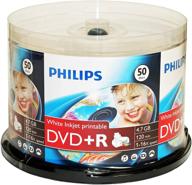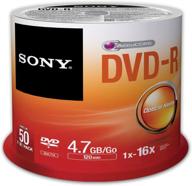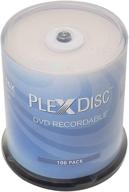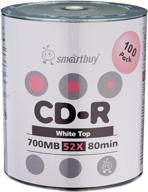
Review on 🎙 60-Minute Dictation & Audio Cassette Tape, Normal Bias - Pack of 30 (2 x 30 min) by Kholar Irvine

Maxell, once a big brand, is now made in China trash!
Cassette tape production flourished in the early 1980's when all audio cassette manufacturers made their products in Japan. Maxell in particular was pioneering with its tape with an epitaxial formula. This cassette was used in the cassette models "UD", "XL-I", "XL-II" and "XL-II-S". By 1982, Maxell audio cassettes featured four major improvements that took the technology to its absolute perfection.1. PX Pure Crystal Gamma2. Unique binder (prevents oxide release)3. Dimpled pull blades 4. Square hubs1. Maxell was at the forefront of the group as their unique PX Pure Crystal Gamma Particulate Oxide formula produced clear, stable sound output. An extremely advanced binding keeps the recording heads clean, even when several hundred of these tapes are played on a cassette deck. The flawless performance of the cassettes was also aided by the concept of sandwiching the tape spools between heavily knobbed slipsheets. This gave the tape very smooth motion in both play and rewind modes, as the force of the indentation constantly aligned the tape to neatly wound spools. This was possible because the indentation subjected the band to strong pressure from both sides. This concept would ultimately result in 100% perfect tape-to-head alignment since the tape would always pass the head exactly where it was recorded. a little tight. This rarely caused tape jams and wasn't really a problem compared to other brands. The center section of the cassette had square hubs, which greatly reduced vibration and wobble as the rollers gripped the tape hubs more precisely. The trend of the 80's, early 90's "cost cutting” spread like a cancer. The first thing to do was lay the foundation for the flawless performance of Maxell cassettes, the legendary square sleeve cassette body. This happened around 1988-1989. Instead, new shells were created with an oval window, and square hubs were replaced with standard round hubs. Around the same time, the narrow, knobbed backing sheets of the cassette that held the tape reel were replaced with a flatter, smaller knobbed backing sheet. This was evidenced by the tape reel making much less contact with the sheet in play and take-up modes. I suspect Maxell did this in response to consumer complaints about the noise the ribbons made when winding and the binding caused by the ribbon's tension. Leaves. I compare this change fairly closely to consumers complaining about a car engine making too much noise so the manufacturer decides to ditch the engine. Do you see the absurd here? If the tape works fine in both record and playback modes, who cares about the noise the tape makes in rewind mode? Next, the binding was changed, which took place in 1994-1995. The tapes I used during this time left visibly more oxide on my scalp. To save even more on manufacturing costs, Maxell used a cheaper binder, which in turn would not bond the oxide to the tape as tightly as the original binder used in the early 80's. Output power, particularly in the 12,000 to 20,000 Hz range, began to drop in models from the early '80s. Changes in slipsheet manufacture and a cheaper binder would have created noticeable azimuth problems. A slight offset could result in high frequency attenuation. Between 1996 and 1997 Maxell still produced UE, UR, XL II and XL II S cassette models of acceptable quality. Unfortunately, the quality of their UD, UDI and UDII began to fall far behind, and the LN tapes were also in a questionable range. Many of these tapes were discontinued in 1999 as CD-R became more popular, but UR tape was still a generic tape. By 2001, Maxell had discontinued most of its band lines, keeping the XLII and UR models as its own. the only choice for analogue hobbyists like me who still love the ease of use of cassette tape. much cheaper (and nastier) polyester strap for their "UR" model. eBay seems to be inundated with these audio cassettes as nobody wants them and they are constantly listed with no bids or buyers. inflated bid and ask prices. A box of original 1981 Maxell UD 90 straps sold on eBay last week for over $200 with 17 uses. This is a situation that Maxell's management should take full advantage of. They no longer need to produce cartridges in the same quantity and range as they did in the early 80's because clearly there isn't a market. However, it would be great if Maxell could still produce at least one or two good quality model cartridges exactly as they were made during the 1985 era. It would be great to see the original UD and XLII tapes as they were made in 1985. I hope someone at Maxell sees this review, checks eBay, and realizes how popular quality blank cartridges are. Return the original "Maxell UD" strap, you can come to a store near you and keep your fingers crossed!
- Everything is fine!
- Price
New products
Comments (0)
Top products in 📀 Blank Media

High-Quality Philips 16X DVD+R Media 50 Pack 📀 - White Inkjet Printable - Versatile Cake Box Packaging (DR4I6B50F/17)

10 Review

Sony 50DMR47SP DVD R 4 7GB Recordable

10 Review

PlexDisc DVD-R 4.7GB 16x Recordable Media Disc - 100 Disc Spindle: Reliable and High-Quality Data Storage Solution

11 Review

📀 Smartbuy 700MB/80min CD-R Blank Data Recordable Media Discs - Pack of 100, 52x Speed, White Top

10 Review
Another interesting products

Smartphone Samsung Galaxy A50 4/64 GB, 2 SIM, black

82 Review

Renewed Logitech G PRO X Wireless Lightspeed Gaming Headset with Blue VO!CE Mic Filter for Immersive Gaming Experience

122 Review

Apple AirPods Pro MagSafe RU Wireless Headphones, White

159 Review

Logitech HD Webcam C270: Crisp 720p Widescreen Video Calling & Recording (960-000694), Lightweight and Portable at 3.15 lb.

192 Review

